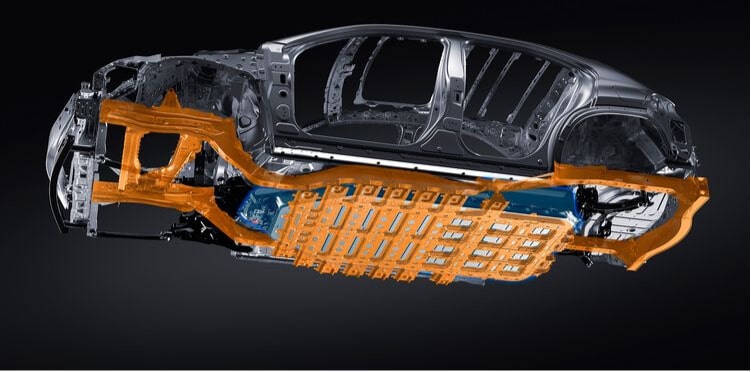Hyundai Motorstudio Senayan Park
Hyundai Motorstudio Senayan Park
Newsroom
-
What Is the Raw Material for Electric Car Battery?
- Hyundai Motorstudio Senayan Park 2022.08.04
-
Electric cars are among the most developed vehicle segments nowadays due to various advantages, one of which is that they do not trigger emissions due to the use of batteries.
Eco-friendly factors make the demand for electric cars increase. As a result, the demand for raw materials for electric car battery has increased, while the current production of car batteries has not been able to meet market demand.
For now, battery recycling is a solution to overcome the unstable raw material supply chain. But what exactly is the raw material for electric car battery that are widely used?
Raw Material for Electric Car Battery
The basic materials used to make electric car batteries are still widely available in nature, but taking them carelessly will only damage the nature.
Besides the well-known lithium, battery raw materials are actually quite varied. Nickel, manganese, and cobalt are some of the components that make up today's batteries.
1. Lithium-Ion
It is a type of raw material that is widely used for various batteries. This is widely known for being the main raw material for making cell phone batteries today, replacing the NiCad (nickel-cadmium).
Lithium-ion batteries, commonly called li-ion batteries, are lighter and compact to be used in a wide range of applications, including electric cars. With the same weight and volume, the li-ion battery is able to store 40% more electricity than the NiCad model.
In general, li-ion batteries can be recharged up to 1,000 times. These characteristics make lithium-ion suitable for electric cars.
2. Lithium-Oxygen
This raw material has better characteristics, and is capable of reaching 2,000 recharge cycles. Lithium-oxygen is made from carbon electrodes and other additive compounds to make it stable and efficient.
The additive compounds are lithium hydroxide with water and lithium diodes which act as electrolytes to reduce chemical reactions, while increasing their stability. This is coupled with graphene electrodes to provide high efficiency and increase the storage capacity that cars need.
3. Lithium-Sulfur
As its name, lithium-sulfur is a rechargeable battery technology that uses a sulfur cathode which offers a higher energy density than other types. As a result, the battery is able to store more electricity.
Compared to other models, lithium-sulfur is superior in capacity and less expensive. However, the technology to make it is still limited. This is the reason why the adoption of lithium-sulfur batteries is still low compared to lithium-ion, especially for electric cars, which are now booming.
4. Nickel
The majority of batteries in electric cars rely on nickel. But some car manufacturers are trying to get rid of their dependence on nickel by switching to lithium iron phosphate, popularly called LFP batteries.
LFP batteries are not as good as the lithium in their storage capacity, but they are cheaper and offer longer life. LFP batteries only can go for 300 km for a single charge, compared to 450 km for nickel.
The popularity of electric cars makes the demand for raw material for electric car battery materials increase, especially nickel. For now, the demand for raw materials is unable to keep up with production.
5. Manganese
Together with nickel, manganese is the raw material for electric car batteries. However, the adoption of manganese for electric cars is still low, with 90% of manganese being used for the iron and steel industry.
Currently, only 0.02% of manganese is extracted to produce electric car batteries. In the future, this figure is predicted to rise by 1% and higher for the next few years.
6. Cobalt
Like nickel and manganese, cobalt is required for the cathode. The growing production of electric cars puts greater pressure on cobalt production. Under the current scenario, the demand for cobalt for electric car batteries will reach 315,000 tons by 2030, which is 20 times the current demand.
The development of a cobalt-free cathode is still being carried out to reduce dependence on this compound, especially as a raw material for electric car battery.
So, How Much Lithium for Raw Material for Electric Car Battery?
The electric car battery is the power source needed to run the propulsion system. The battery models used are generally rechargeable batteries, and the majority are lithium-ion.
Besides lithium-ion, there are other types of lithium that are used to produce electric car batteries. So, how much lithium is needed to make a car battery?
Actually, it is not difficult to calculate the amount of lithium needed to power electric car batteries. Lithium has an atomic weight of 6.94 g/mol. This small amount has proven to be a reliable source of power.
Actually, the calculation of lithium is based on the closest estimate because any type of atom is never 100% fixed. From this calculation, the lithium content used in lithium-ion batteries is around 0.85 kg per kWh for lithium carbonate and 0.16 kg per kWh for lithium metal.
For now, the majority of car batteries use lithium-ion and lithium-ion polymer technology. This is because lithium has a higher cell density to store more energy, despite its small size and lightweight.
In electric vehicles, the battery is an expensive part, even reaching 50% of the price of the car. The reason is that the raw material for electric car battery is not easy to get. Even if it is easy to get, the problem lies in the processing technology which is still limited.




